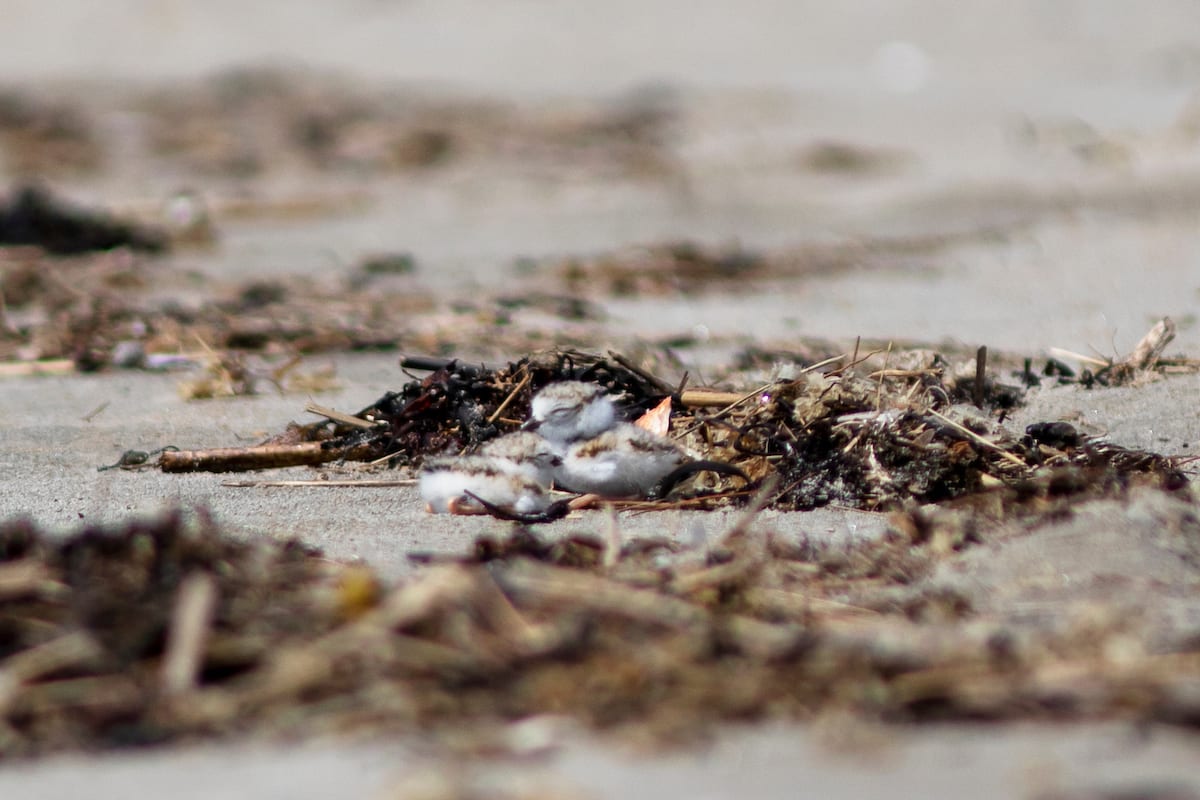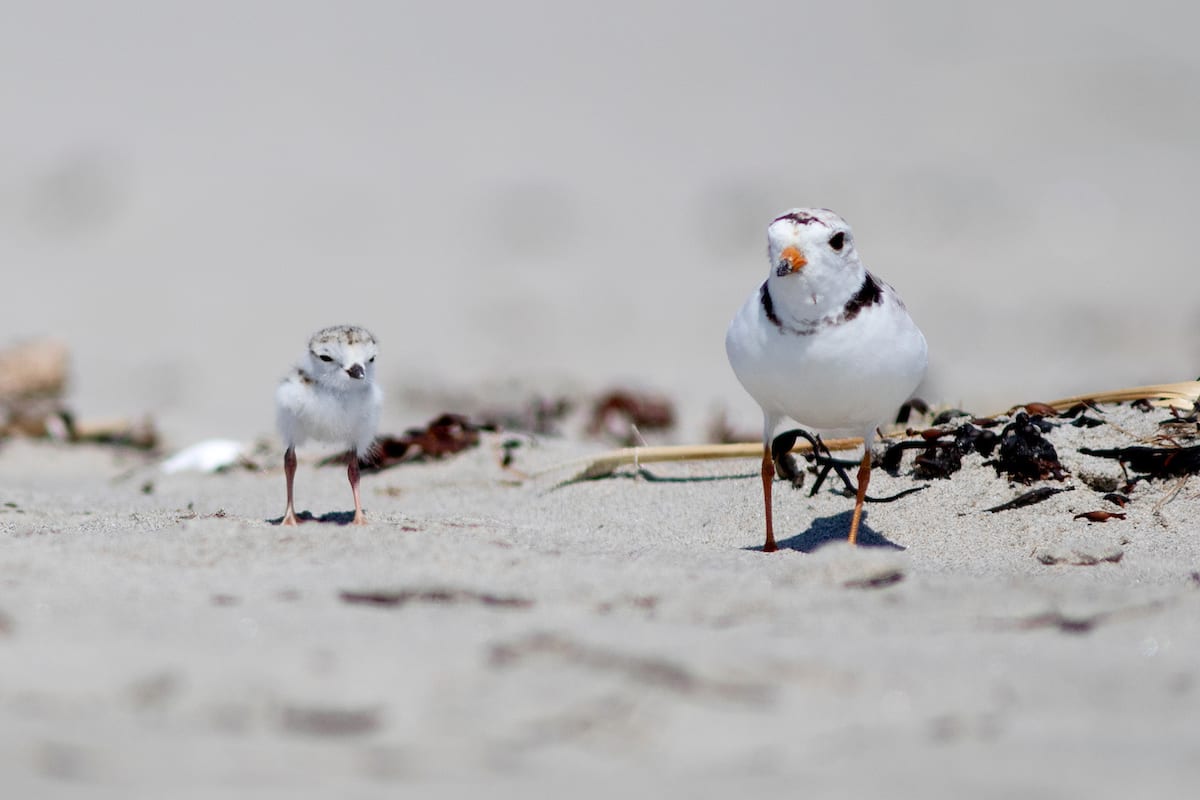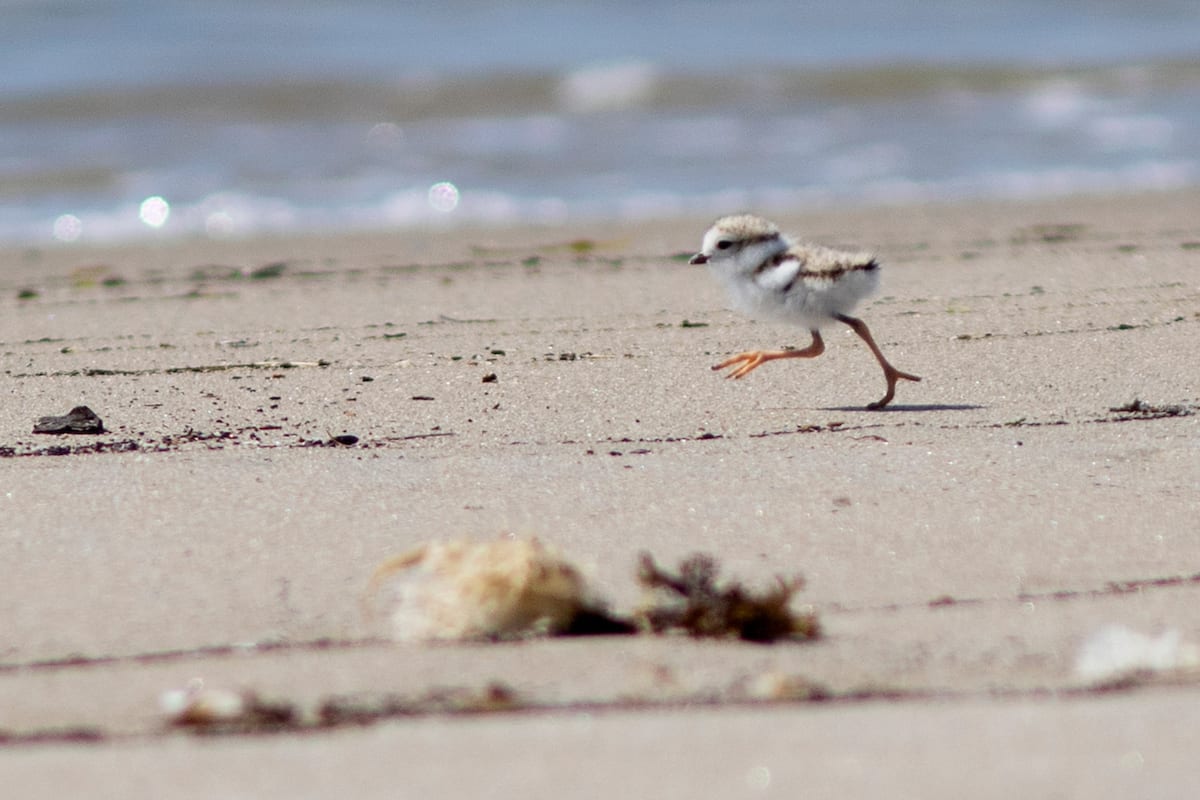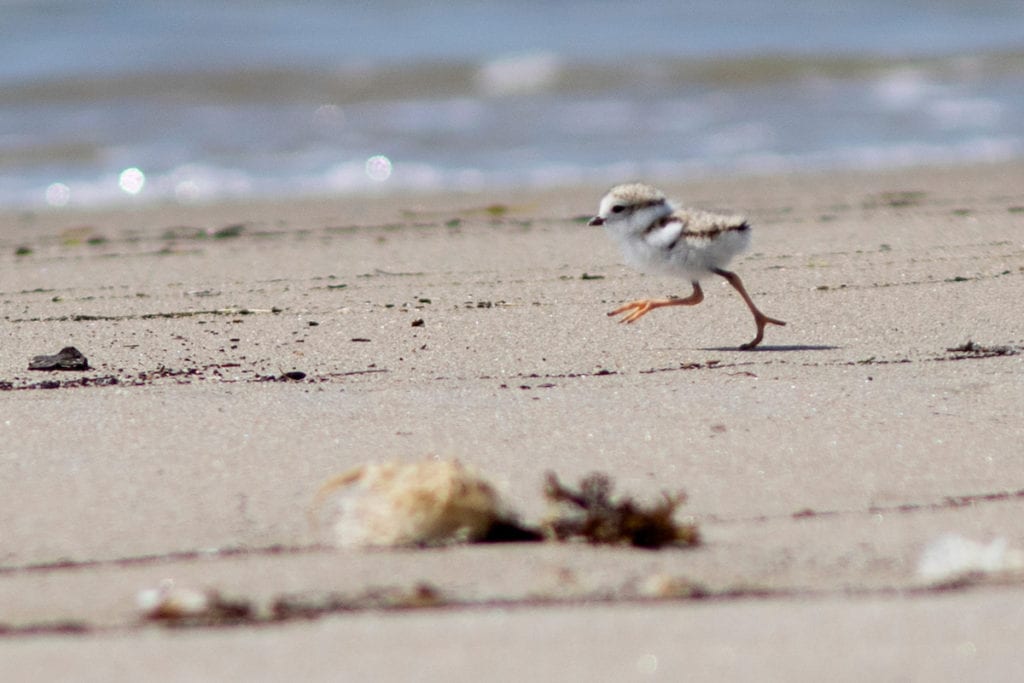
The Maine Audubon “plover crew” has wrapped up its 2018 season monitoring the nesting of Piping Plovers on Maine’s beaches — and they have good news to report for this struggling species.
“In 2018, we had a record number of nesting pairs and a record number of fledglings for Maine,” explained Laura Minich Zitske, who leads the Maine Coastal Birds project. “We tallied 68 total nesting pairs, with 128 fledged birds.”
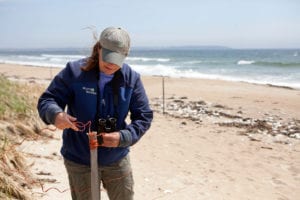
Since April, Laura and her crew — including biologists Sam Albright and Zac Fait, and interns Monica Johnson, Ashley Price, and Anthony Erwin — have been monitoring 20 beaches from Ogunquit to Georgetown. The team and partners at Maine Department of Inland Fisheries and Wildlife and U.S. Fish and Wildlife Service work with landowners, volunteers, and municipal and state agencies to create safe nesting conditions for these birds and to educate beachgoers on how best to share the beach.
“The success we’re seeing for plovers this year is really a testament to these partnerships,” Laura said. “Without engaged landowners, dedicated volunteers, and proactive public works folks in these seaside towns, we could never hope to have the sort of reach we’ve achieved together. We have volunteers that are out at dawn walking the beaches, looking for birds, and talking to people. A healthy dose of luck in terms of good weather always helps, too!”
This year, Ogunquit Beach saw the most fledglings, with 24. Fifteen more each were counted at Wells Beach and Scarborough’s Western Beach.
“We had only 27 nesting pair when I first worked on this project in 2009,” Laura explained. “For the past four years, we’ve had at least 60 nesting pairs. I feel good about this consistency we’ve had in recent years. Not only to have a record number of nesting pairs, but for those nests to do well, makes me feel more confident in the growing stability of Maine’s Piping Plover population.”
“Of course, at the end of the day we’re still talking about only 68 nesting pairs in the whole state,” she added. “These birds still have a long way to go.”
Piping Plovers are a great example of a species that has been helped greatly by the Endangered Species Act (ESA). Current proposed rule changes by the Trump Administration would dramatically undermine this successful law — which is why Maine Audubon is asking its members and the public to speak up in defense of the ESA.

